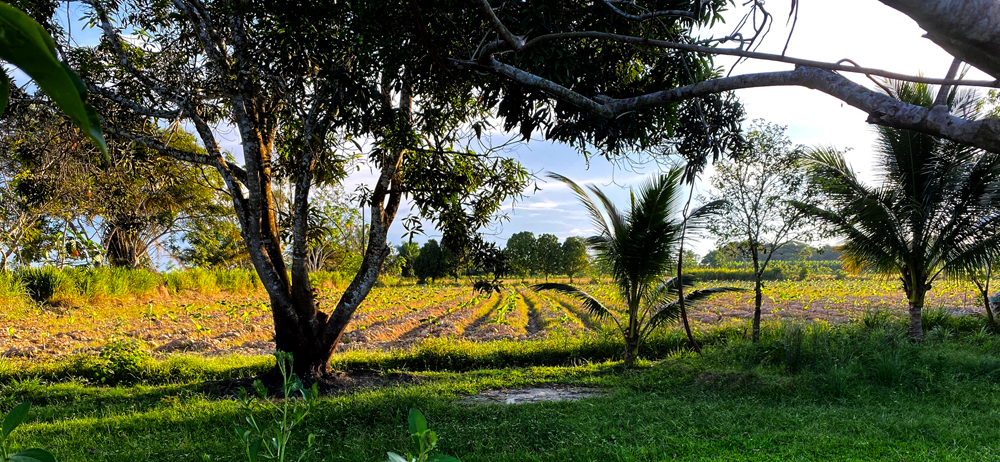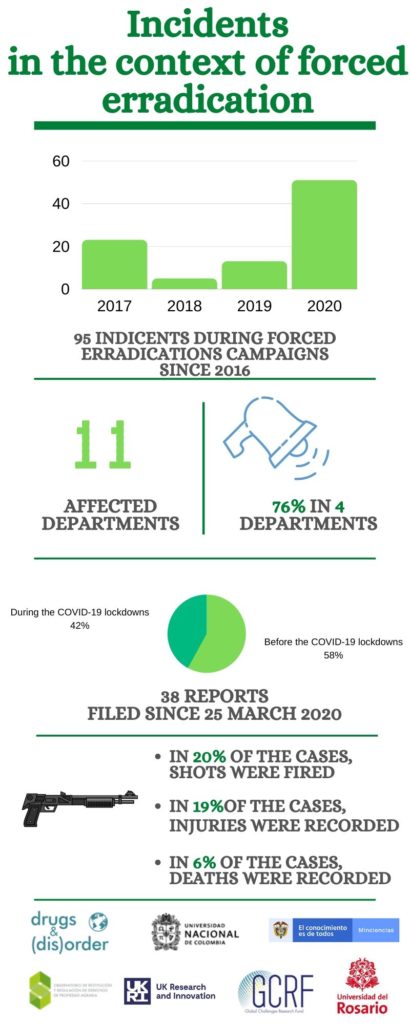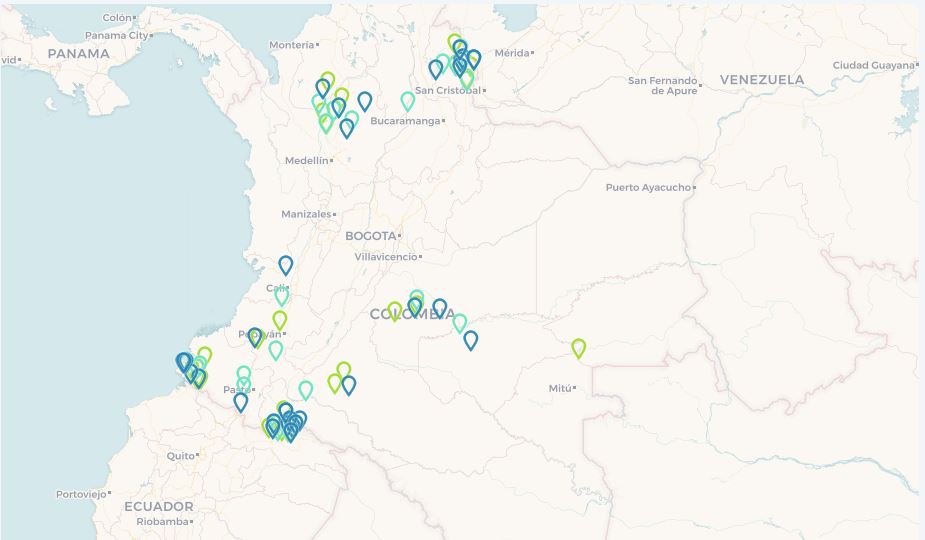
Last update: 14/07/2020
This is a multimedia report in which we show incidents (confrontations between the public forces and rural populations or other disturbances) that occurred in the midst of forced manual eradication of illicit crops. It draws on a database, created by the Observatory for the Restitution and Regulation of Agrarian Property Rights, which includes records of this type of event starting 2016. We continue to update the database as new such events are registered.
This multimedia special aims to give visibility to the impacts of forced eradication in territories where the resources and productive projects promised in points 1 and 4 of the Final Peace Agreement are still far off. The incidents identified in this report are one of the obstacles to an effective transition from war to peace in coca-producing areas.
The database draws on information provided by peasant organizations and human rights defenders -such as the Coordinating Committee of Coca, Poppy and Marijuana Growers (COCCAM in Spanish)- as well as press reports. The record for each event refers the following categories: the source of information; department; municipality; village; date of the incident; description of the incident; state actors involved; social organizations involved; and acts of violence.
The database illustrates two issues in this regard:
🌱 The lack of coordination between the National Comprehensive Program for the Substitution of Illicit Crops (PNIS in Spanish) and the policy of forced manual eradication. Here, some of the events registered show confrontations taking place between the public forces and peasant communities while people were waiting to enroll in the PNIS or had already signed collective agreements and were waiting for the state to fulfill its commitment.
🌱 The excessive use of force by the public forces. As the database shows, some incidents ended in the death of one or more people.
The map below only includes the georeferenced incidents. Click on the map to view the details of each forced eradication incident. If a particular department or municipality comprises several incidents, zoom in on the sites to for a better view.

Source: self made
So far, the database includes 95 incidents, which document confrontations between rural communities and state forces during forced eradication between 2016 and 2020. Most of them (51 incidents) occurred in 2020 and 42% are concentrated in the period since March 2020 when the Covid-19 pandemic lockdown began.
These incidents affected 11 of the country’s 33 administrative departments but the vast majority –71 cases or about 76 per cent– took place in just four departments: Norte de Santander, Putumayo, Nariño and Antioquia.
About 20% of the incidents involved the use of firearms by state forces or an unspecified third party. In 19% of the incidents at least one person was injured and in six cases at least one person was killed. In three incidents protestors forcefully deprived military or civilian personnel dedicated to eradication of their liberty.
Testimonies
In this special issue we also collected and systematized videos videos that show what happens when forced eradication is carried out by the Mobile Antio-Riot Squadron (ESMAD) and/or the Armed Forces. Most of these videos of forced eradication were recorded by peasants, to use in formal complaints agains the perpetrators.
Below you will find a few of these videos and you will be able to download a data base where we have arranged them by place, date and event.
El Retorno, Guaviare
Recorded by a peasant woman from the area, this video shows the use of tear gas by the ESMAD. You can also see the assault carried out by the security forces against the peasants.
The clash takes place in the context of a number of protests of more than 500 peasants from different communities that had come together in El Retorno to demand the implementation of the collective agreements of the National Comprehensive Program for the Substitution of Illicit Crops (PNIS in Spanish) signed in this region.
Tercer Milenio; vista Hermosa, Meta El Retorno, Guaviare
Starting May 20, the communities of Guaviare and southern Meta had been carrying out a protest action to demand that the agreements of the National Comprehensive Program for the Substitution of Illicit Crops (PNIS in Spanish) be implemented. Between 1 and 4 June the Armed Forces deployed a military operation that included more than 12 helicopters to disperse these people.
This video shows the exact moment when the clashes between the Armed Forces and the peasant community of Tercer Milenio, located between Guaviare and Southern Meta, begin. The use of force and assaults by the Military are apparent in this video.
Cúcuta, Norte de Santander
Starting 25 April 2020, the Peasants’ Association of Catatumbo (Ascamcat in Spanish) and the Coordinating Committee of Coca, Poppy and Marijuana Growers (COCCAM in Spanish) have been speaking out against the beginning of forced eradication operations in the rural area of Cucuta and asked that the Office of the Ombudsman monitor human rights violations taking place in this context.
In these videos, the inhabitants of the communities of Totumito, Vigilancia and Nueva Victoria report the murder of one of their peers. These communities have asked to be included in the PNIS and that the manual forced eradication campaign be put on hold during the pandemic.
If you know or have information about other cases of forced eradication and want to contact us, you can do so through the mail: datosorrdpa@gmail.com




